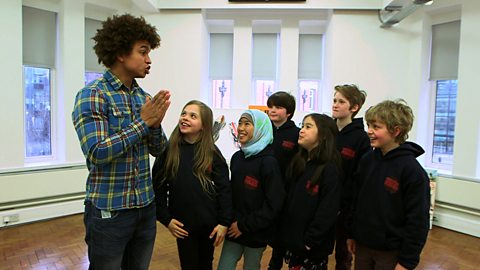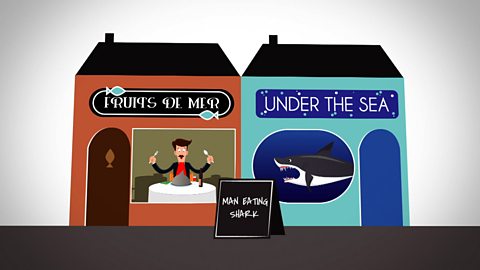Video summary
Radzi and a group of children visit a law firm to learn about using punctuation in presentations.
They find out what a board meeting is, and about presenting information in a precise manner.
They insert colons and list items from a paragraph into bullet points.
Radzi and the children have a conversation about the use of âandâ in a bullet point list.
In the second part of the task, the children need to use a colon and a semi-colon.
Using a colon to introduce a list and semi-colons to separate items in a descriptive list are explained.
This short film is from the ±«Óătv series, Punctuation Rules.
Teacher Notes
If pupils are working on a piece of non-fiction writing, they may need to understand how to use bullet points.
Pupils will be able to practice their understanding of skimming and scanning to illustrate that they have understood the main points of a text.
Using semi-colons in a descriptive list could be a practical activity where pupils create their own sentences in a particular context â what a doctor needs, how to be a top goal scorer, how to apply gel nails, etc.
This short film is relevant for teaching English language and literacy at KS2 and KS3 in England, Wales and Northern and 2nd Level in Scotland.
Using punctuation in advertising - brackets, commas and dashes. video
Radzi and a group of children visit an advertising agency to learn about the importance of punctuation in advertisements.

Verbs, adverbs and fronted adverbials in sports journalism. video
Radzi and a group of children visit Manchester City Football Club to learn why grammar and punctuation are so important in sports journalism.

Confusing sentences - using commas and hyphens. video
Radzi and some children visit a shopping arcade, where they look at a series of boards with confusing messages.

Why is punctuation important in news? video
Radzi and a group of children set out to discover why punctuation is important for clarity in the ±«Óătv newsroom.

Punctuation in story-writing - inverted commas, full stops and question marks. video
Radzi and a group of children visit Manchester Central Library to learn how to identify correct punctuation in a paragraph of a story.
